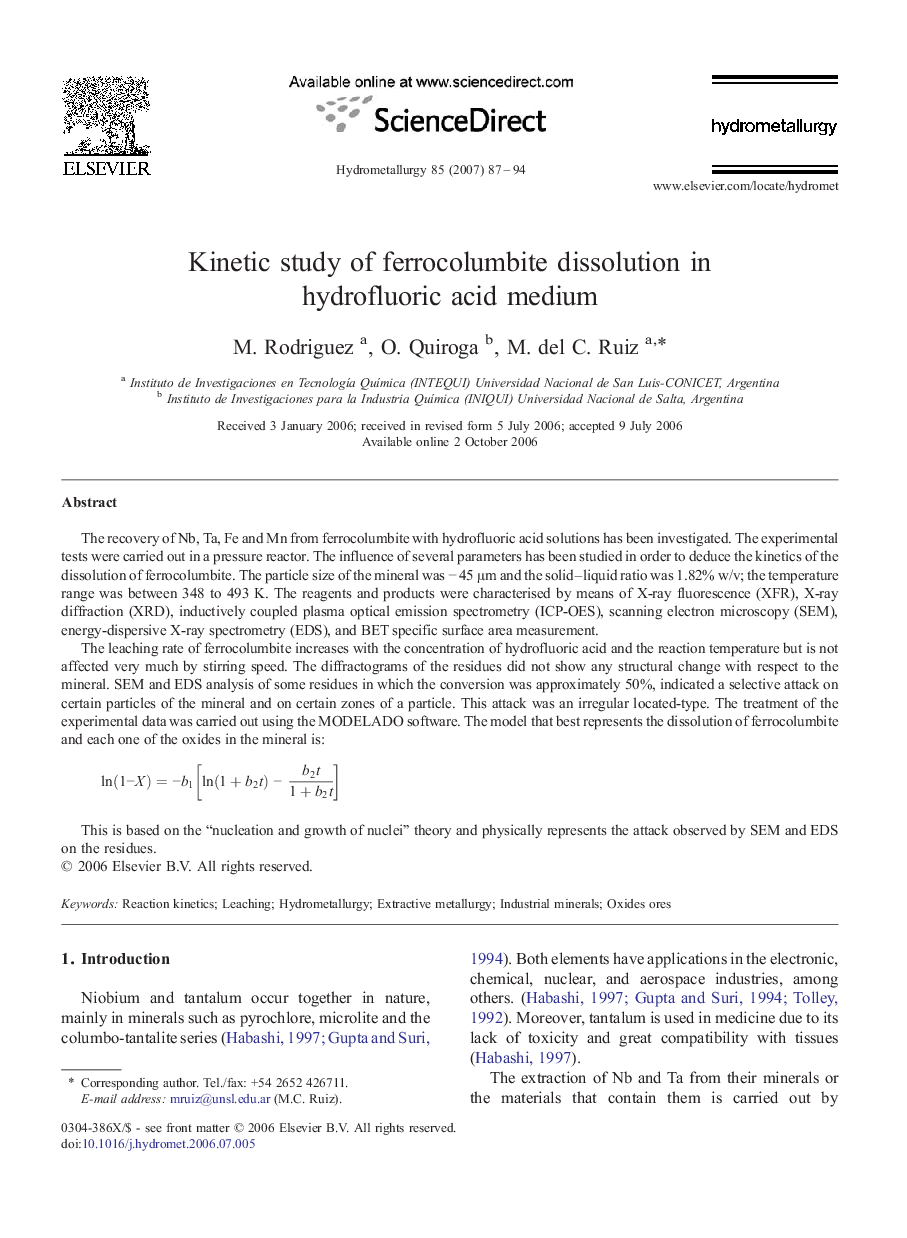| Article ID | Journal | Published Year | Pages | File Type |
|---|---|---|---|---|
| 213562 | Hydrometallurgy | 2007 | 8 Pages |
The recovery of Nb, Ta, Fe and Mn from ferrocolumbite with hydrofluoric acid solutions has been investigated. The experimental tests were carried out in a pressure reactor. The influence of several parameters has been studied in order to deduce the kinetics of the dissolution of ferrocolumbite. The particle size of the mineral was − 45 μm and the solid–liquid ratio was 1.82% w/v; the temperature range was between 348 to 493 K. The reagents and products were characterised by means of X-ray fluorescence (XFR), X-ray diffraction (XRD), inductively coupled plasma optical emission spectrometry (ICP-OES), scanning electron microscopy (SEM), energy-dispersive X-ray spectrometry (EDS), and BET specific surface area measurement.The leaching rate of ferrocolumbite increases with the concentration of hydrofluoric acid and the reaction temperature but is not affected very much by stirring speed. The diffractograms of the residues did not show any structural change with respect to the mineral. SEM and EDS analysis of some residues in which the conversion was approximately 50%, indicated a selective attack on certain particles of the mineral and on certain zones of a particle. This attack was an irregular located-type. The treatment of the experimental data was carried out using the MODELADO software. The model that best represents the dissolution of ferrocolumbite and each one of the oxides in the mineral is:ln(1−X)=−b1[ln(1+b2t)−b2t1+b2t]This is based on the “nucleation and growth of nuclei” theory and physically represents the attack observed by SEM and EDS on the residues.
